今日上海
著名摄影家展现上海之美 - 2023年08月27日
Renowned explorer encapsulates a district's essence in a museum show
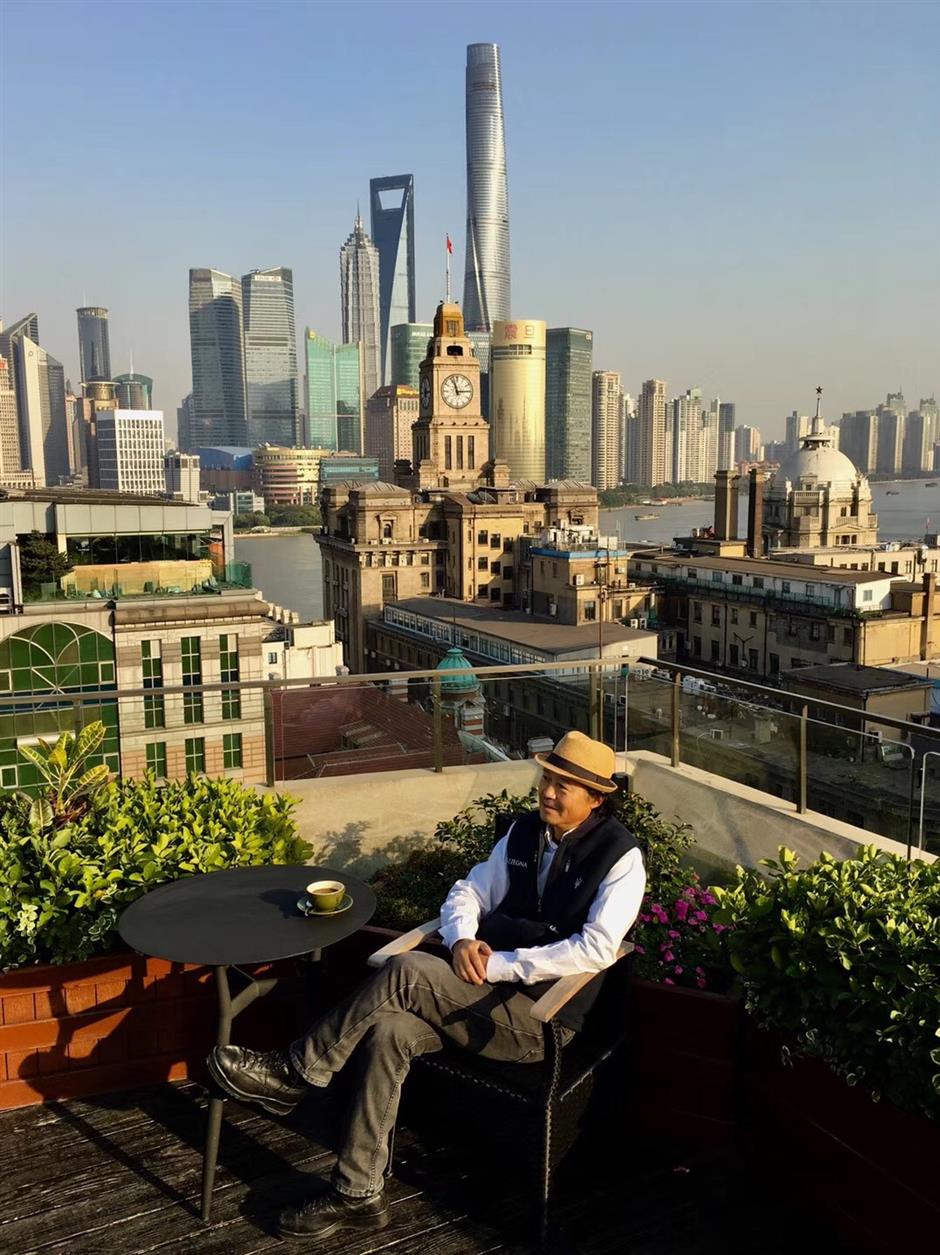
Deke Erh sits on a Bund building in Shanghai.
Deke Erh, 64, a renowned Shanghai adventurer, photographer and author, brings the breadth of his five-decade career to bear in showcasing the cultural and artistic heritage of Hongkou District.
An exhibition, entitled "Deke Erh's Southern Yangtze Delta Field Research," has opened at the Zhu Qizhan Art Museum. It celebrates the district's maritime history, its Art Deco legacy and the development of haipai, or classic Shanghai style.
In a sense, the entire exhibition is a reflection of Erh himself – revealing the ambition and commitment behind a long journey that doesn't end with this museum show.
"I am fortunate as a photographer to have decades of experience capturing Shanghai's development and changes," said Erh. "And I will spend the whole of my remaining life exploring the city's history and culture."
Beginning in the early 1980s, long before heritage preservation became fashionable, he began documenting historical Shanghai architecture and training his lens on the street scenes and people who gave the city its distinctive character.
Erh has published over 50 photo books, including "A Last Look -- Western Architecture in Old Shanghai" (1990), "Frenchtown Shanghai" (2000) and "Art Deco in Shanghai" (2006). He has also documented life in rural areas of the Yangtze River Delta.
He was a pioneer in proposing ways of rejuvenating the countryside while preserving its natural beauty. In 2010, he published "Oral History: Deke Erh and 108 Tea Drinkers in Zhujiajiao" and later opened a teahouse in the ancient water town in Qingpu District.
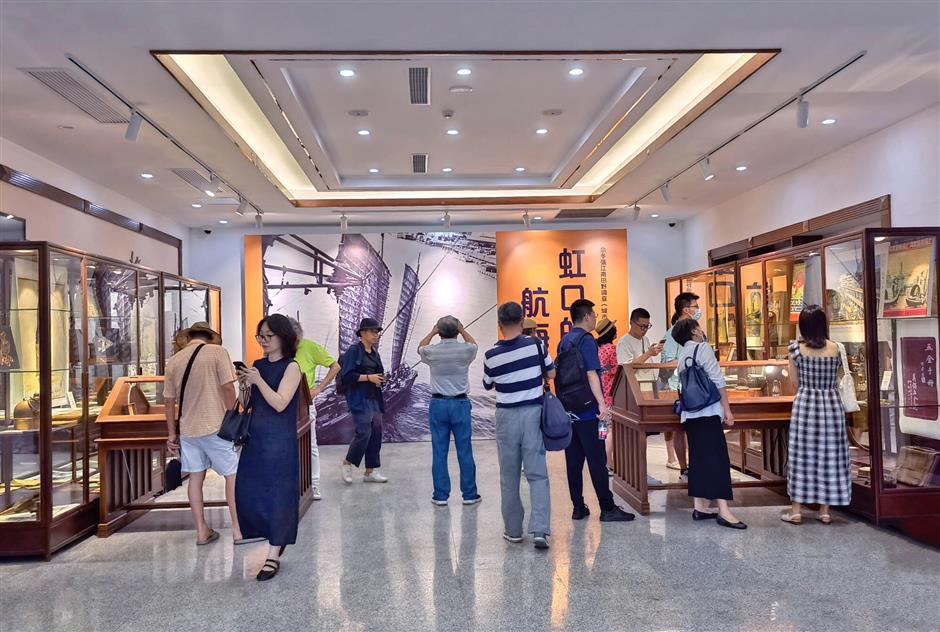
Deke Erh's exhibition at Hongkou's Zhu Qizhan Art Museum attracts many visitors.
Perhaps Erh is best known for his epic Maritime Silk Road Expedition, begun in April 2015, when he retraced old routes of Chinese seafaring trade by sailing from Shanghai via the Red Sea to the Mediterranean port of Gibraltar.
The journey sparked his fascination with ports and rivers, invariably leading to his fascination with the Hongkou District, where more than five rivers intersect and a fusion of Western influence and Chinese tradition created a hub of art and commerce.
Erh and his team spent a year amassing material for the new exhibition in Hongkou.
The project focused on the Yujingpu, Shajinggang and Hongkougang rivers, along with the Huangpu River and Suzhou Creek, delving into the past of shipping and maritime industries.
Over 300 exhibits, selected from nearly 700 artifacts collected by the team, are on display.
One highlight is a 1936 calendar from an American shipping company, revealing that at least two ships at that time set sail weekly from Hongkou's Huishan Wharf, bound for global destinations.
Additionally, "Metalwork Manuals" found in local hardware stores listed specialized equipment and parts for ships. They reveal that Hongkou was not merely a hub in the production of daily hardware items but also served as workshop for crafting precision instruments crucial for maritime navigation.
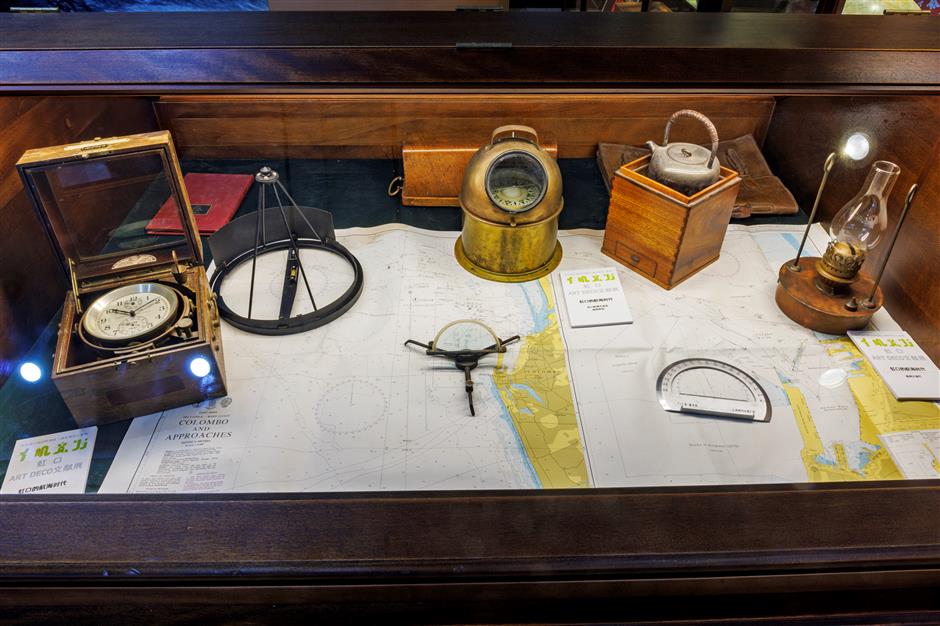
Specialized maritime equipment found in hardware stores in Hongkou District.
The exhibition also sheds light on the evolution of haipai artifacts over the past century.
Among the displayed items are pieces of furniture, such as chairs and desks, which were replicated from the interiors of Shanghai's once popular monthly pictorial "Liangyou," also known as "The Young Companion."
The exhibition features district landmarks through old photographs, posters and decorative paintings.
One of Erh's photographs captures a panoramic view from the rooftop of the Embankment Building in Hongkou, framing the Lujiazui skyline on the east side of the river and the historic Peace Hotel on the west.
The exhibition is divided into three interconnected chapters: "The Glorious Maritime Era," "Classic Hongkou," and "Advanced Urban Culture."
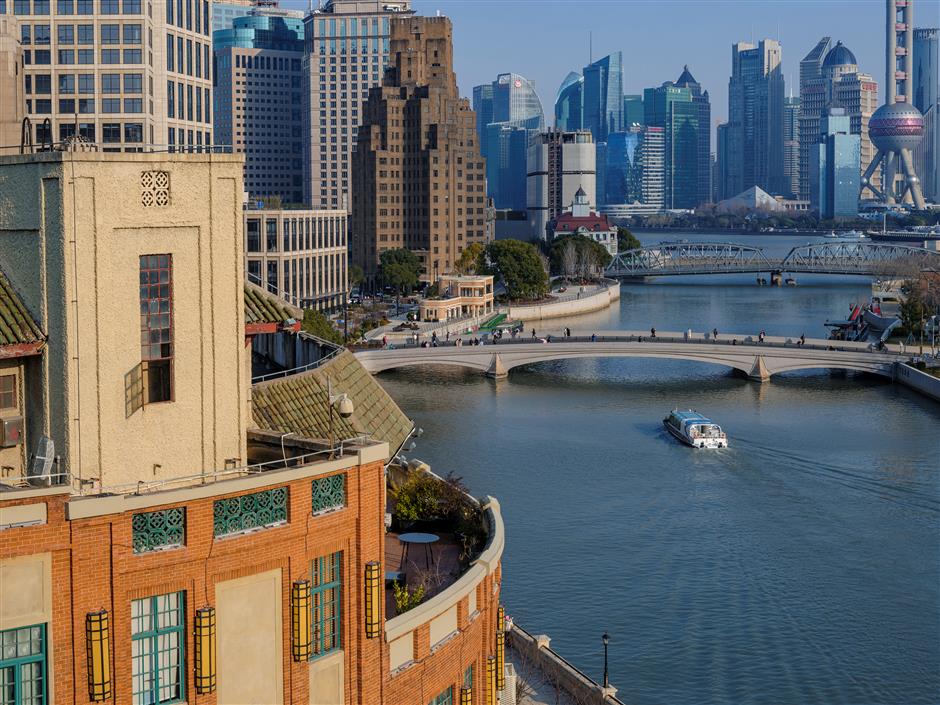
Erh's photograph of the Huangpu River at Suzhou Creek.
Xiong Yuezhi, a researcher at the Shanghai Academy of Social Sciences, said Hongkou blends styles common on the south side of the lower reaches of the Yangtze River with haipai and China's red revolutionary history.
The district serves as a window into Shanghai heritage, Xiong noted, citing the influence of American, Japanese and Jewish culture, as well as the imprints left by film, education and publishing industries.
One prominent influence was the Art Deco style, an artistic expression known for its simplicity, Xiong said. Erh told Shanghai Daily that Art Deco structures in the city never lose their charm.
Originating in Paris in the 1920s, Art Deco left its mark on Shanghai, which boasts the second-largest number of architectural examples of the style globally, following New York City.
Erh is a pioneer in researching Art Deco in Shanghai, earning him acclaim both here and abroad.
The style not only permeated architecture but also furniture, trains, toys and everyday items like calendars, advertisements, paintings, films, books and magazines.
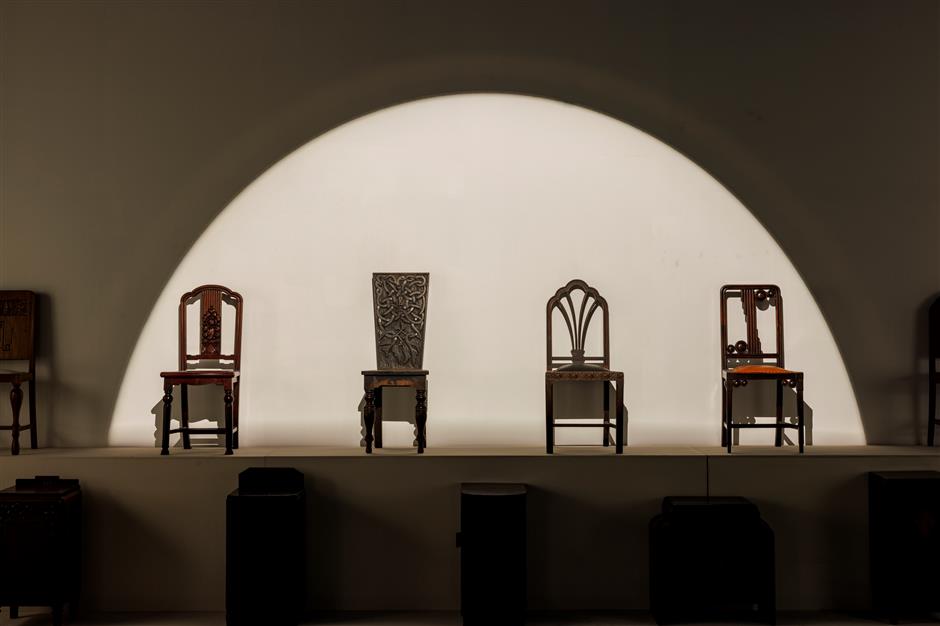
Old furniture featuring Art Deco patterns is on display at the exhibition.
One notable example is the Shanghai Enamelware Factory, once located on Tianbao Road. Through the exhibition, visitors can "treasure hunt" porcelain plates adorned with Art Deco designs.
The scenes on these plates depict fashionable women standing in Art Deco surroundings.
Similarly, the Shanghai Radio Factory, which used to operate on Ouyang Road, has been brought back to life through the exhibition. By revisiting vintage magazines, the classic exterior of this Art Deco building has been resurrected.
Erh said the influence of Art Deco highlights Shanghai's ability to embrace new influences while retaining traditional heritage.
"Shanghai should establish an Art Deco museum and host a global Art Deco conference," Erh said. "I would love to welcome Art Deco aficionados from around the world to the city."
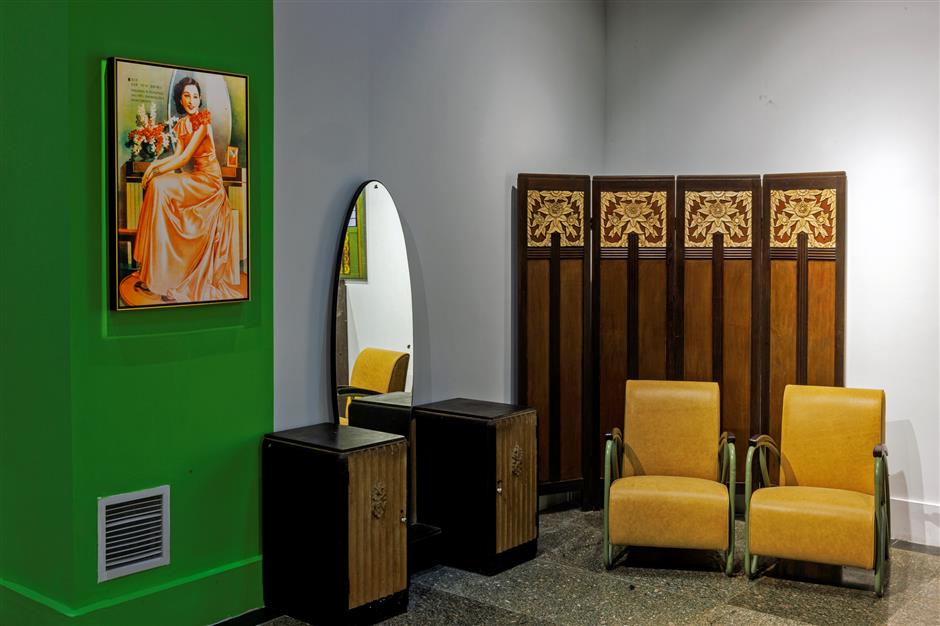
Art Deco permeated posters and interior décor.
If you go:
Date: Through October 7
Open hours: Tuesdays through Sundays (9:30am-4:30pm)
Venue: Zhu Qizhan Art Museum 朱屺瞻艺术馆
Address: 580 Ouyang Rd 欧阳路580号
Admission: Free
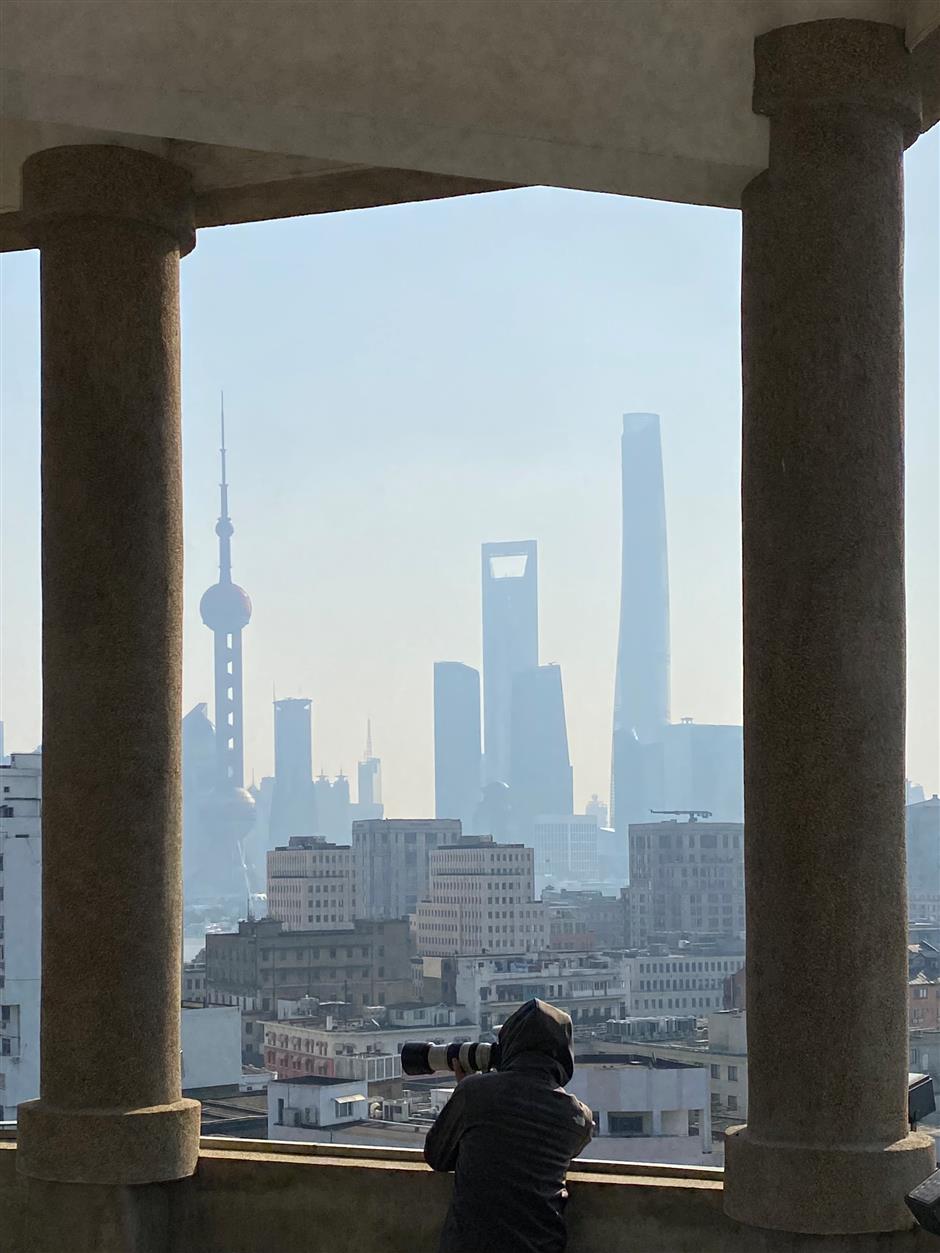
Erh photos along the Huangpu River.
Source: Shanghai Daily
